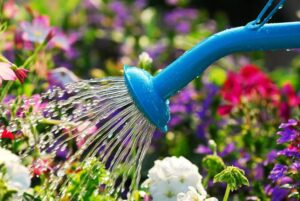Preventing Overwatering: A Comprehensive Guide
Watering your plants is a crucial aspect of plant care, but overwatering can be just as harmful as underwatering. Too much water can lead to root rot, suffocating plant roots, and a host of other problems that can ultimately kill your plants. In this comprehensive guide, we will explore the ins and outs of overwatering prevention, providing you with the knowledge and tools to keep your plants healthy and thriving.

Understanding the Basics
To prevent overwatering, it’s essential to understand the fundamental concepts of plant watering. Plants need water for photosynthesis, nutrient uptake, and cooling. However, excess water can damage their delicate root systems and create an environment conducive to fungal and bacterial growth.
- Plant Needs: Different plants have varying water requirements. Some plants prefer to dry out slightly between waterings, while others like consistently moist soil. Understanding your plant’s specific needs is the first step in prevention.
- Proper Drainage: Ensure that your pots have adequate drainage holes. Proper drainage allows excess water to escape, reducing the risk of overwatering.
- Soil Type: Choose the right soil for your plants. Well-draining soil, such as a mix of potting soil and perlite or vermiculite, helps prevent waterlogged roots.
- Container Selection: The type of container you use can affect water retention. Terra cotta pots, for example, allow soil to breathe and excess moisture to evaporate.
Preventing Overwatering
Signs of Overwatering
Before we delve into prevention techniques, let’s identify the telltale signs of overwatering:
- Wilting: Paradoxically, overwatered plants may show wilting, which can be a sign of root damage.
- Yellowing Leaves: Yellowing leaves, especially if they are also dropping, can indicate excess water.
- Mold or Fungus: The presence of mold or fungus on the soil surface is a clear sign of excessive moisture.
- Root Rot: Gently pull a plant from its pot to check for rotting, brown, or slimy roots.
- Slow Growth: Stunted growth or a lack of new growth can result from waterlogged roots.
Preventing Overwatering
Now that you can identify the signs of overwatering, let’s explore effective ways to prevent it:
- Know Your Plants: Research the specific watering needs of your plants. Each species is different, and understanding these differences is crucial.
- Use a Moisture Meter: A moisture meter is a handy tool that can help you determine if your plants need water. Stick it into the soil to gauge the moisture level at the root zone.
- Water Sparingly: When in doubt, water sparingly. It’s often better to underwater slightly and adjust than to overwater.
- Establish a Watering Schedule: Create a watering schedule based on your plant’s needs. This ensures consistency without the risk of overdoing it.
- Water at the Right Time: Water your plants in the morning or early afternoon. This allows excess moisture to evaporate during the day rather than lingering overnight.
- Use the Bottom-Up Method: Instead of watering from the top, place your pots in a tray with water. The plants will draw up the water they need, preventing overwatering.
- Elevate Pots: Raise your pots slightly above the tray or saucer they sit in. This prevents the plant from sitting in standing water after watering.
- Mulch the Soil: Adding a layer of mulch, like bark or coconut coir, can help retain moisture and reduce the frequency of watering.
- Inspect Drainage: Periodically check that drainage holes are clear and not clogged with soil or debris.
- Reevaluate Your Watering Practices: Pay attention to how your plants respond to your watering routine and adjust it accordingly.
Rescuing Overwatered Plants
Despite your best efforts, accidents can still happen. If you notice signs of overwatering, take immediate action to save your plants:
- Stop Watering: Cease all watering until the soil dries out.
- Prune Affected Areas: Remove any damaged or rotting leaves and stems.
- Repotting: If the problem persists, consider repotting your plant into well-draining soil and a pot with better drainage.
- Increase Airflow: Ensure your plants receive good air circulation, which can help dry out excess moisture.
- Reevaluate Care: Reflect on your watering habits and make necessary adjustments.
In conclusion, preventing overwatering is a crucial aspect of successful plant care. Understanding your plants’ specific needs, using appropriate tools, and implementing the right techniques can help you maintain healthy and thriving greenery. By being attentive to your plants and their responses, you can strike the perfect balance between giving them the water they need and protecting them from the perils of overwatering. Remember, a little extra care in preventing overwatering goes a long way in promoting a flourishing indoor or outdoor garden.
Post my you like